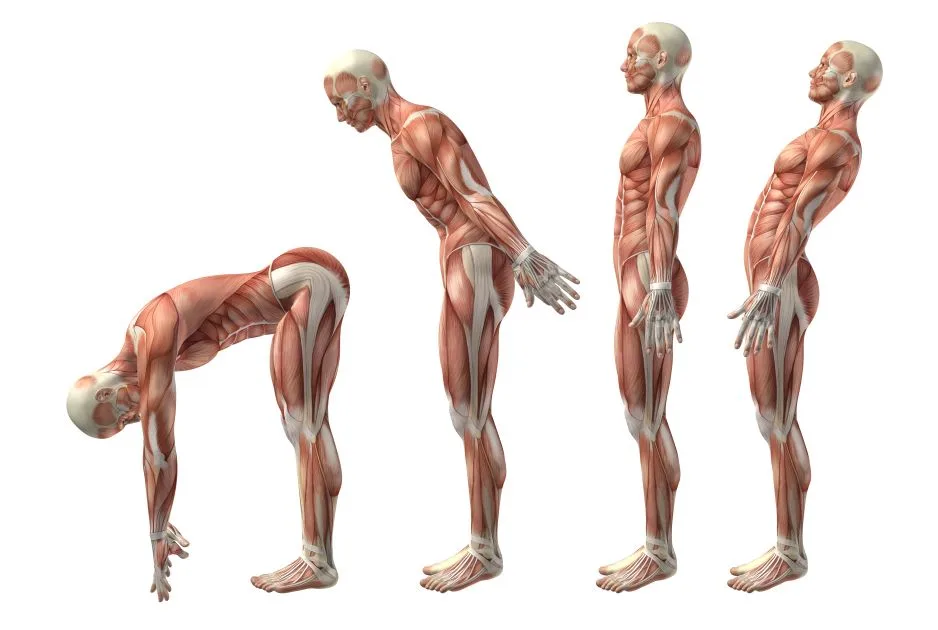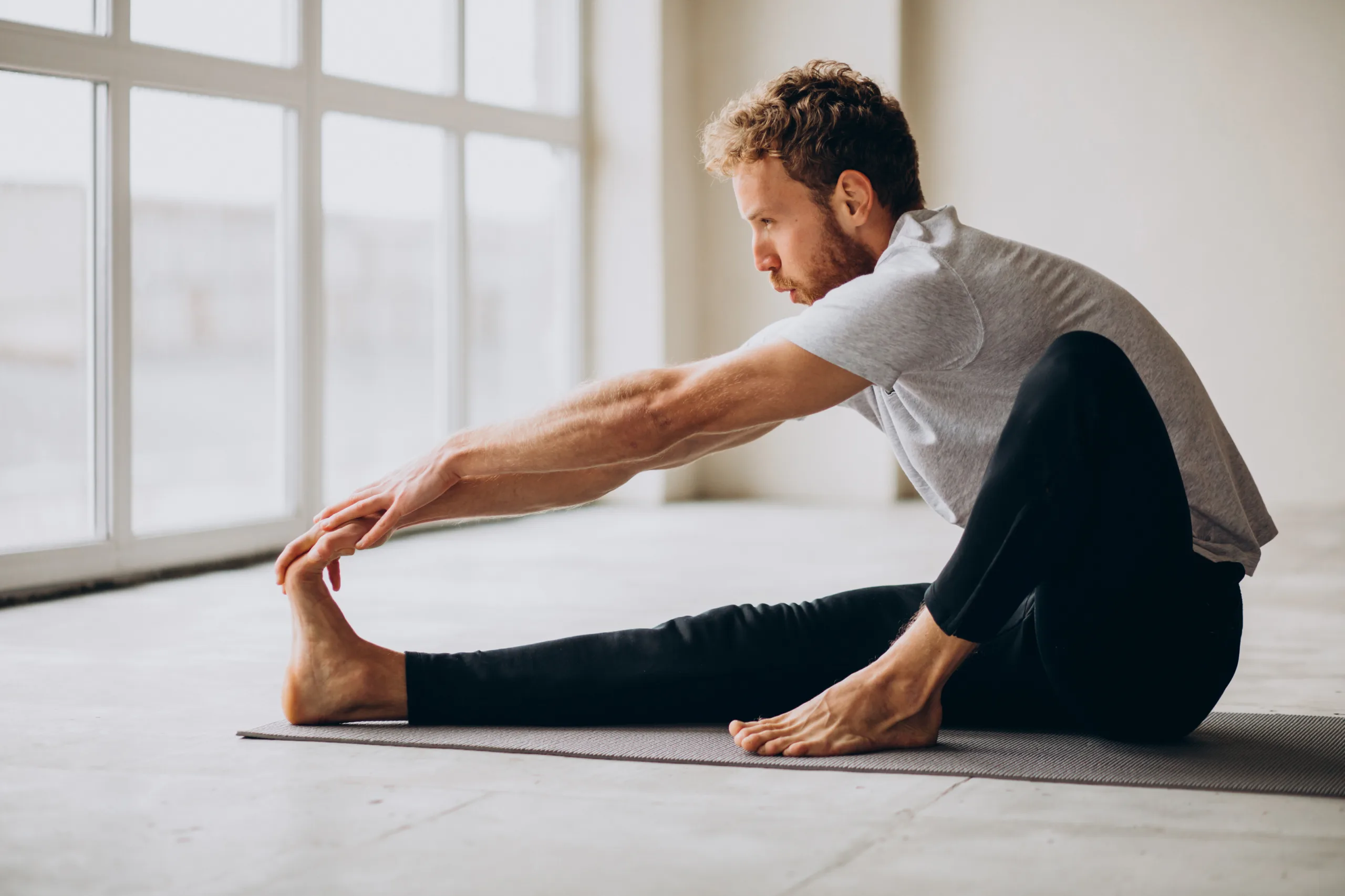Hello fitness enthusiasts! Ready to take your workout to the next level? Buckle up as we delve into the scientific intricacies of the Animal Flow Workout. In this guide, we’re going to dissect the physiological and psychological benefits, explore personalized goal-setting, discuss nutritional support, and touch on long-term health and wellness. Get ready to embark on a journey that’s not just about exercise but a holistic approach to unlocking your body’s full potential.
Unraveling the Origins: A Brief History of Animal Flow
Animal Flow, conceived by fitness innovator Mike Fitch, emerged from a blend of diverse movement disciplines, including gymnastics, parkour, and bodyweight exercises. The method draws inspiration from the seamless and powerful movements observed in the animal kingdom. Mike Fitch, with a background in gymnastics and a passion for unconventional fitness, conceptualized Animal Flow to break away from the monotony of conventional training.
The Evolution of Animal Flow:
Early Influences: The roots of Animal Flow trace back to Fitch’s exploration of bodyweight exercises and unconventional movement patterns. Influenced by various fitness modalities, he envisioned a dynamic, full-body workout that mimicked the fluidity and strength of animals.
Creation of Animal Flow: Animal Flow officially came to life in the early 2010s, with Fitch introducing it to the fitness world through workshops and online platforms. The foundational movements, known as “beast” and “crab,” formed the basis for a series of interconnected exercises that seamlessly flowed from one to another.
Rapid Adoption and Global Spread: As the fitness community sought fresh and engaging workouts, Animal Flow gained traction rapidly. Fitness enthusiasts, athletes, and trainers embraced the method for its versatility, promoting strength, mobility, and coordination. The global fitness community witnessed a surge in Animal Flow practitioners, sharing their experiences and contributing to the method’s growth.
The Scientific Artistry of Animal Flow:
With the historical backdrop laid out, let’s delve into the scientific underpinnings that make Animal Flow a unique and transformative fitness practice.
Understanding the Biomechanics of Animal Flow:
Multi-Planar Movement Dynamics: Animal Flow’s emphasis on multi-planar movements aligns with biomechanical principles, promoting improved flexibility and functional fitness. These movements challenge muscles and joints in ways that traditional exercises might not (Behm et al., 2010).
Primal Movement Patterns: Incorporating primal movement patterns not only provides a full-body workout but also enhances neuromuscular coordination and balance. This emphasis on foundational movements contributes to a more comprehensive and integrated approach to fitness (Kraemer et al., 2002).

The Neurological Ballet of Animal Flow:
Neuroplasticity and Skill Acquisition: Animal Flow’s intricate movements contribute to neuroplasticity, rewiring the brain for improved motor control and skill acquisition. As we engage in these diverse and challenging movements, our brains adapt, leading to enhanced coordination and agility over time (Schmidt and Lee, 2011).
Enhancing Proprioception: The dynamic and varied nature of Animal Flow requires heightened proprioception, fostering improved spatial orientation. Proprioception, the body’s awareness of its position in space, is a key element in preventing injuries and improving overall movement efficiency (Bermúdez et al., 2016).
Benefits Beyond the Physical:
Stress Reduction through Mindfulness: Animal Flow’s focus on intentional movement and breathwork significantly reduces stress levels, contributing to overall mental well-being. The integration of mindfulness practices within the workout can lead to a profound sense of relaxation and mental clarity (Lavey et al., 2014).
Improved Cognitive Function: Engaging in complex movement sequences stimulates cognitive function, potentially enhancing cognitive abilities over time. The mental demands of Animal Flow, including memorizing sequences and maintaining focus, contribute to improved cognitive function (Hillman et al., 2008).
Precision in Practice:
Individualized Progression: Tailoring Animal Flow to individual fitness levels is paramount, ensuring continued adaptation and preventing plateaus. The versatility of the method allows for personalized progression, whether you are a beginner or an advanced practitioner (Kraemer and Ratamess, 2004).
Integration with Other Modalities: Animal Flow complements various training modalities, enhancing overall fitness without compromising specific training goals. Whether integrated into a strength training program or practiced as a standalone routine, Animal Flow brings a unique dimension to your fitness journey (Chulvi-Medrano et al., 2018).
Safeguarding Your Movement Journey:
Preventing Overuse Injuries: A thorough warm-up and gradual progression mitigate the risk of overuse injuries, allowing for a sustainable practice. As with any physical activity, proper form, and gradual advancement are crucial in preventing injuries associated with overuse (Montalvo et al., 2019).
Consultation with Healthcare Professionals: Individual differences in health and fitness require personalized attention. Consulting with healthcare professionals ensures that Animal Flow aligns with individual health considerations, especially for those with pre-existing conditions or unique physiological considerations.
Crafting Your Animal Flow Journey:
Personalized Programming: Crafting a personalized Animal Flow program involves understanding goals, fitness levels, and preferences. Periodization principles can be applied to optimize results and prevent burnout. By structuring your training in phases, you can systematically address different aspects of fitness and prevent stagnation (Bompa and Buzzichelli, 2015).
Building a Community of Beasts:
Social Motivation and Accountability: Joining the Animal Flow community amplifies motivation, fostering a supportive environment that enhances commitment to the practice. The sense of community provides motivation, accountability, and a platform for sharing experiences and insights (Dunton et al., 2019).
The Future of Animal Flow:
As we stand at the intersection of history and science, the future of Animal Flow appears promising. Its popularity continues to grow, with ongoing research exploring its potential applications in rehabilitation, sports performance, and even cognitive health. The integration of technology, such as virtual classes and apps, is making Animal Flow accessible to a broader audience, ensuring its continued evolution and influence in the fitness landscape.
Conclusion:
In conclusion, Animal Flow is not merely a workout; it’s a dynamic fusion of history, science, and artistry. We encourage you to embrace the primal movements, tap into the neurological ballet, and experience the holistic benefits that this primal workout routine offers. So, let’s unleash our inner beasts, break free from convention, and sculpt our bodies and minds into works of art. Here’s to your journey of transformative fitness, where history meets science, and movement becomes an art form.
Check out our blog on healthy and easy-to-make meals
References:
- Behm, D. G., et al. (2010). “Acute effects of muscle stretching on physical performance, range of motion, and injury incidence in healthy active individuals: a systematic review.” Applied Physiology, Nutrition, and Metabolism, 35(3), 381-391.
- Kraemer, W. J., et al. (2002). “A series of studies—the physiological basis for strength training in American football: fact over philosophy.” The Journal of Strength & Conditioning Research, 36(1), 3-13.
- Schmidt, R. A., & Lee, T. D. (2011). “Motor Control and Learning: A Behavioral Emphasis.” Human Kinetics.
- Bermúdez, V. J., et al. (2016). “The effects of proprioceptive exercises on balance and quality of life of elderly people: a systematic review.” Physiotherapy, 102(3), 300-308.
- Lavey, R., et al. (2014). “The effects of yoga on mood in psychiatric inpatients.” Psychiatric Rehabilitation Journal, 37(2), 117-122.
- Hillman, C. H., et al. (2008). “Be smart, exercise your heart: exercise effects on brain and cognition.” Nature Reviews Neuroscience, 9(1), 58-65.
- Kraemer, W. J., & Ratamess, N. A. (2004). “Fundamentals of resistance training: progression and exercise prescription.” Medicine and Science in Sports and Exercise, 36(4), 674-688.
- Chulvi-Medrano, I., et al. (2018). “Effects of a six-week animal flow intervention on physical fitness components in young adults.” International Journal of Environmental Research and Public Health, 15(2), 305.
- Montalvo, A. M., et al. (2019). “Retrospective injury epidemiology and risk factors for injury in CrossFit.” Journal of Sports Science & Medicine, 18(2), 289-297.
- Bompa, T. O., & Buzzichelli, C. A. (2015). “Periodization: Theory and Methodology of Training.” Human Kinetics.
- Dunton, G. F., et al. (2019). “Social and physical environmental correlates of adults’ weekend sitting time and moderating effects of retirement status and physical health.” International Journal of Environmental Research and Public Health, 16(11), 1904.





Engaging in regular workouts is crucial for overall well-being. Not only do they contribute to physical fitness by enhancing strength, flexibility, and cardiovascular health, but they also play a significant role in mental and emotional balance. Workouts release endorphins, the body’s natural mood boosters, helping reduce stress and anxiety. Additionally, maintaining a consistent workout routine supports better sleep, boosts self-esteem, and promotes a healthier lifestyle overall. Making exercise a priority is an investment in both your present and future health.
Can you share your preferred workout routine for animal flow exercises? I’m interested in incorporating it into my fitness regimen and would love some guidance on where to start
Pingback: How Exercise Can Positively Affect Your Environmental Health